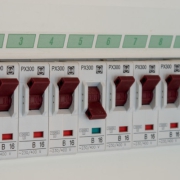Forget hydrogen – here comes biomethane
Hydrogen is often being touted as the final solution to all our problems with pollution from vehicles. It does not produce any CO2 (at least not directly) and for that fact alone it’s the darling of the tree huggers. But reality – as so very often – is much more complex. On balance, hydrogen is not the stuff you want in your tank and comes at a very high price.
No matter who you are or what you do – it’s impossible to escape the environmental propaganda of certain organizations. This is not the place to discuss all the green myths. Only one. Namely – that hydrogen would be cleaner and better than anything else to fuel a car and would not produce any harmful byproducts when combusted. Supposedly, it produces only water which in any case would not be harmful to the environment.
Theoretically – that’s true. Hydrogen does not have any carbon in it and therefore cannot produce CO2 – hence no global warming. when combusted in an internal combustion engine, hydrogen combines with oxygen from the air. And only water is being produced. Great.
Well, not really. Hydrogen is also a gas. And as with all gasses, there is a snag – it is very hard to store economically. Of course, there is always the option to liquefy it as we do with methane gas which would reduce the volume enormously. But that alone is already significantly more expensive than methane as hydrogen drops liquid at around minus 252 degrees Celsius. Almost one hundred degrees colder than methane (let’s stick with this denomination for what we called natural gas so far).
But it’s still hard to store safely. The hydrogen atom is the smallest atom of all and it permeates any material in time. Even its molecular form H2 is still extremely small and it causes hydrogen brittleness. Hydrogen diffuses through Polyethylene and even white-hot silica glass. The very small hydrogen molecules permeate tank walls and tubes making them brittle. Sometimes exposed materials also become toxic which is a problem when you want to scrap your car.
Besides, hydrogen must be manufactured. It does not occur naturally the way we need it for fuelling. It’s, therefore, no primary energy source but rather an energy carrier that must be manufactured from other more primary energy sources. That means you have to spend energy – i.e. money – to produce it and it costs a whole lot more to keep it pure.
Most of the time, hydrocarbons are being reformed when hydrogen is needed. Water electrolysis is a very old and inefficient method to produce hydrogen. It’s also very expensive and is therefore not really in use except in schools and for show purposes.
That brings us back to good old methane. Why on earth should we use methane to produce another fuel if we could already use the methane in the first place as the fuel?
Let’s just compare hydrogen to methane for a moment. Methane produces CO2 when combusted – hydrogen does not. That’s the defining advantage of hydrogen. But honestly – the manufacturing of hydrogen already produces copious amounts of CO2 in the first place (depending on the process used). And this CO2 should be added to the calculation to make this comparison a bit less biased.
Only when hydrogen is being produced using solar or wind power (and I am not even discussing the true carbon footprint of those so-called green energy forms) it is theoretically carbon-free. But then the hydrogen must be produced using the very inefficient electrolysis of water as the reformation of methane still produces carbon.
Just look back at the little technological nightmare of producing and storing hydrogen. Shouldn’t we rather consider an alternative form of fuel for our vehicles? Let’s try biomethane.
Biomethane is manufactured by using organic material (plants have grown and bound carbon from the atmosphere recently and the animal organic material also has grown by munching plants and absorbing their carbon. Then this organic material is exposed to methane-producing bacteria or archaea (the exact process will be subject to another post).
If that biomethane is then burned, the carbon produced just is given back as it was previously taken from the air. That makes biomethane a carbon-neutral fuel in principle.
But when it comes to overall emissions, hydrogen is only emissions-free if it is used to power a fuel cell which then produces electricity which then, in turn, propels the vehicle. Back to case one – you produce electricity (using whatever process you want) and then use this electricity to produce a highly reactive and dangerous gas that must either be compressed or liquefied which in turn costs money and energy (which also must be produced in the first place) just to fill it into a vehicle tank to be turned back into electricity in a fuel cell which in turn propels the vehicle. Sounds simple – ain’t it?
Of course, you can mix the hydrogen directly with air in the engine and do your internal combustion thing. That still produces Nitrogen Oxides (not much but still too much for comfort and to bust emissions limits). When you use ambient air for the combustion of whatever, nitrogen is present in large quantities (let’s not forget that the air you breathe consists primarily of nitrogen). And when this ambient air is being used as a catalyst, some of that nitrogen will transform into Nitrogen Oxides. That makes hydrogen a fuel that emits dangerous substances into the ambient air and hence a pollutant.
Methane also produces some Nitrogen Oxides when burned but it’s still much, much less than diesel. Depending on the combustion method and technology used it can be as much less as 85%. Biomethane, therefore, is a very weak producer of pollution.
So, if we already have something that is carbon neutral, that produces just very little Nitrogen Oxides (that can easily be filtered and hydrogen also produces them when burned), that does not produce fine particles or sulfur oxides, then I cannot understand why everyone is so gung-ho on a dangerous, technologically demanding and expensive secondary energy carrier such as hydrogen.
Any farmer can produce biomethane from livestock wastes or energy crops. The processes are known and have a good operational record. It’s easy and well-proven. Hydrogen is usually produced through vapor reformation – not a process someone wants to have to work on a farm.
I don’t want to be the big hydrogen party crasher but only building the infrastructure necessary for a hydrogen economy will be a monumental task. Besides, I have a problem imagining how a car based on a little-tested brand-new technology with still lots of technology challenges in it can be as cheap as a car based on an internal combustion engine. And we are back to the old equation – we try to protect the environment but it’s going to bankrupt us.
Finally, to fuel big gear such as buses or trucks, we will still need to liquefy hydrogen otherwise energy density will be poor with the consequential deleterious effect on range. Tanks for compressed hydrogen will have to be built from very exotic materials as not only the extreme pressures will have to be resisted but also the brittle factor of the hydrogen itself. This makes them heavy and extremely expensive. Busses with the weight of battle tanks will be roaming our streets then.
Methane and LNG (produced from biomethane) are infinitely superior solutions. CNG is a well-understood technology with decades of solid operational history backing it up. LNG is an extremely well-tested technology with again a solid operational record as a vehicle fuel. No chemistry, no electrolysis. It’s super clean and it’s available as a raw ingredient from nature. And we can do it right now without investing billions in fundamental research with uncertain outcomes.


















Dear Rudolf,
Have a look at microbial coal conversion (www.versoenergy.com is a good site for Australia) as a new technology that has the promise to turn coal into methane in quantity and to feed mini LNG.
Happy to answer any questions that you may have as I do a lot of work in this sector. r.vedhara@micgas.com
Dear Rohit,
Thanks for the very interesting comment.
This is one interesting development on the road to a true methane world and I have it on the radar for a post. Let’s talk.